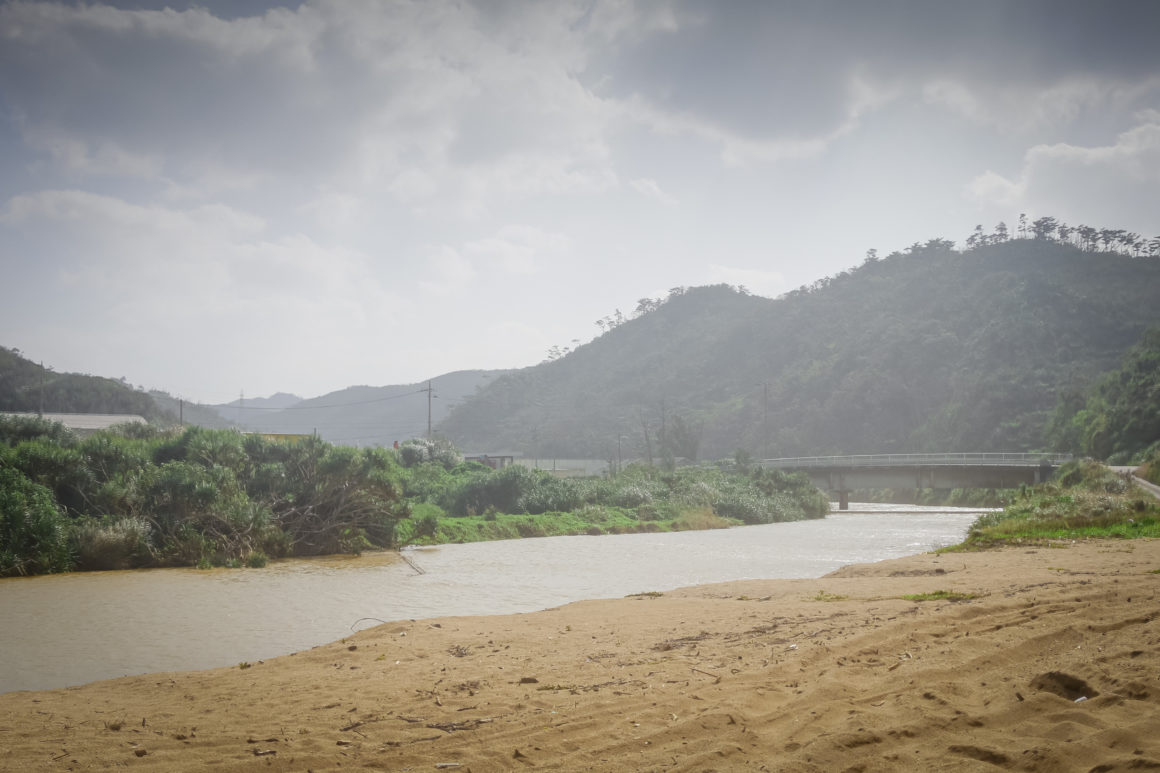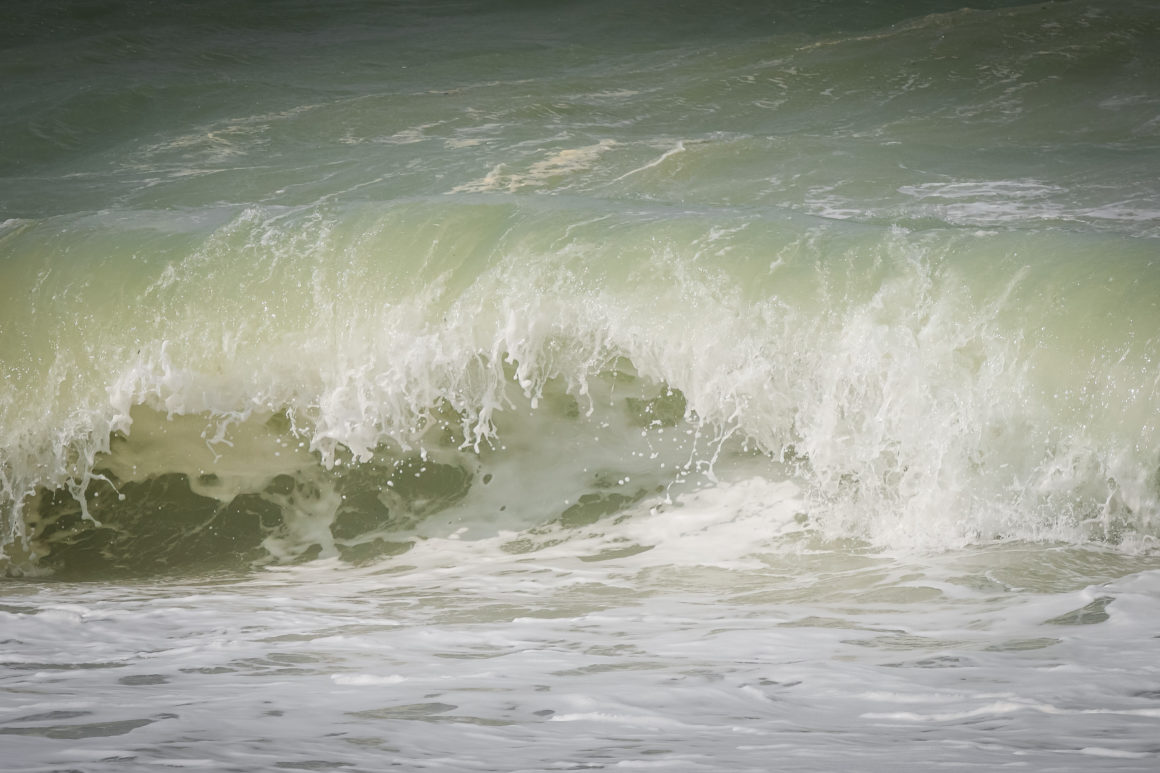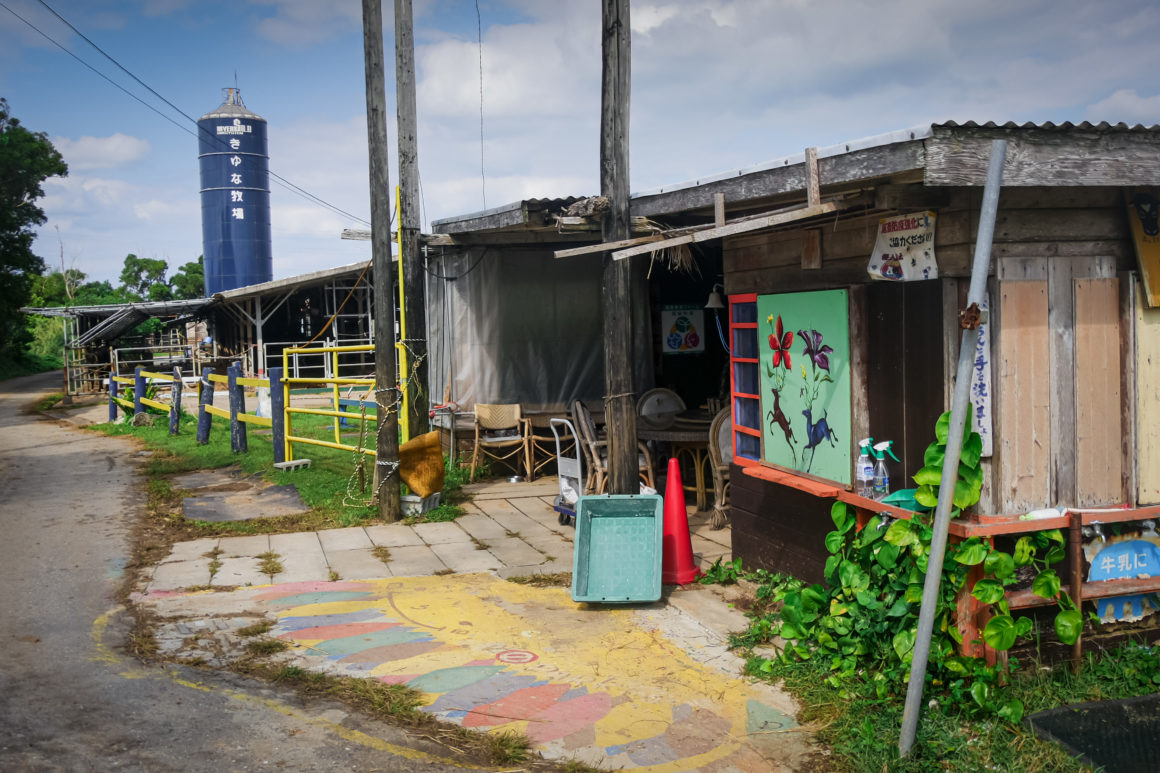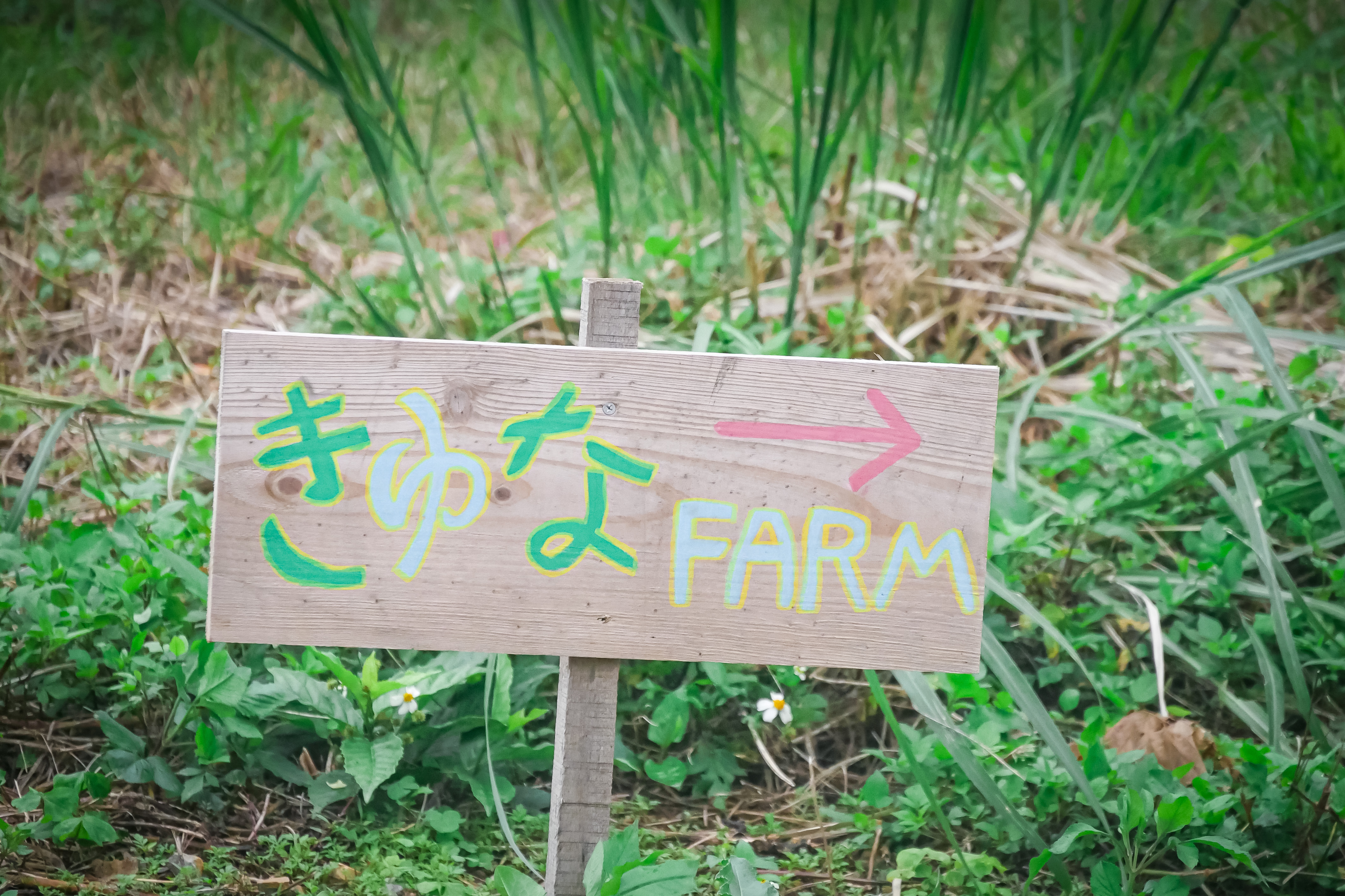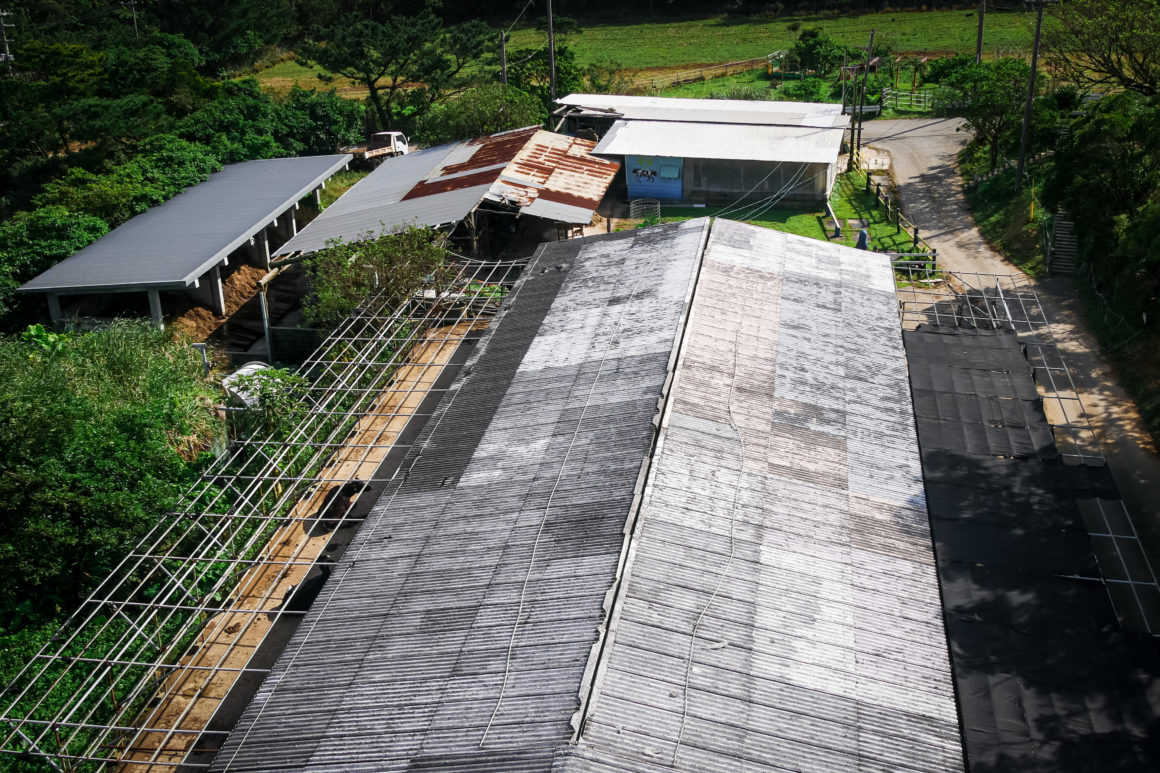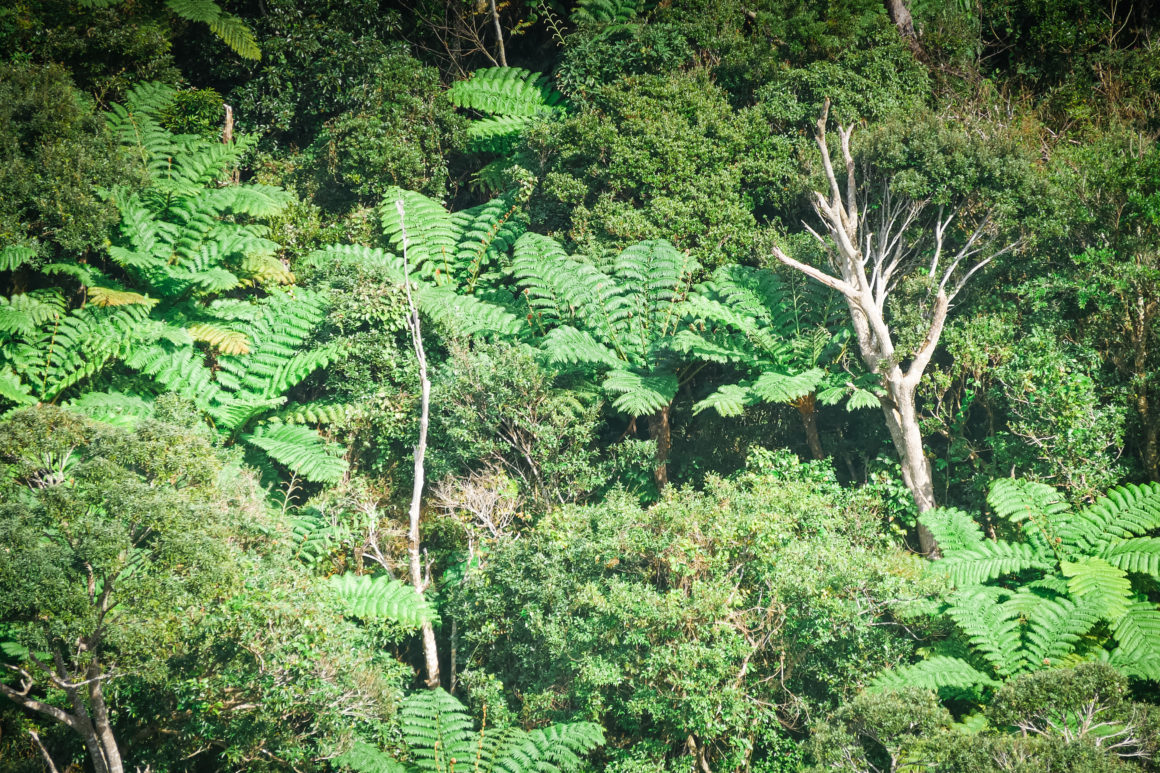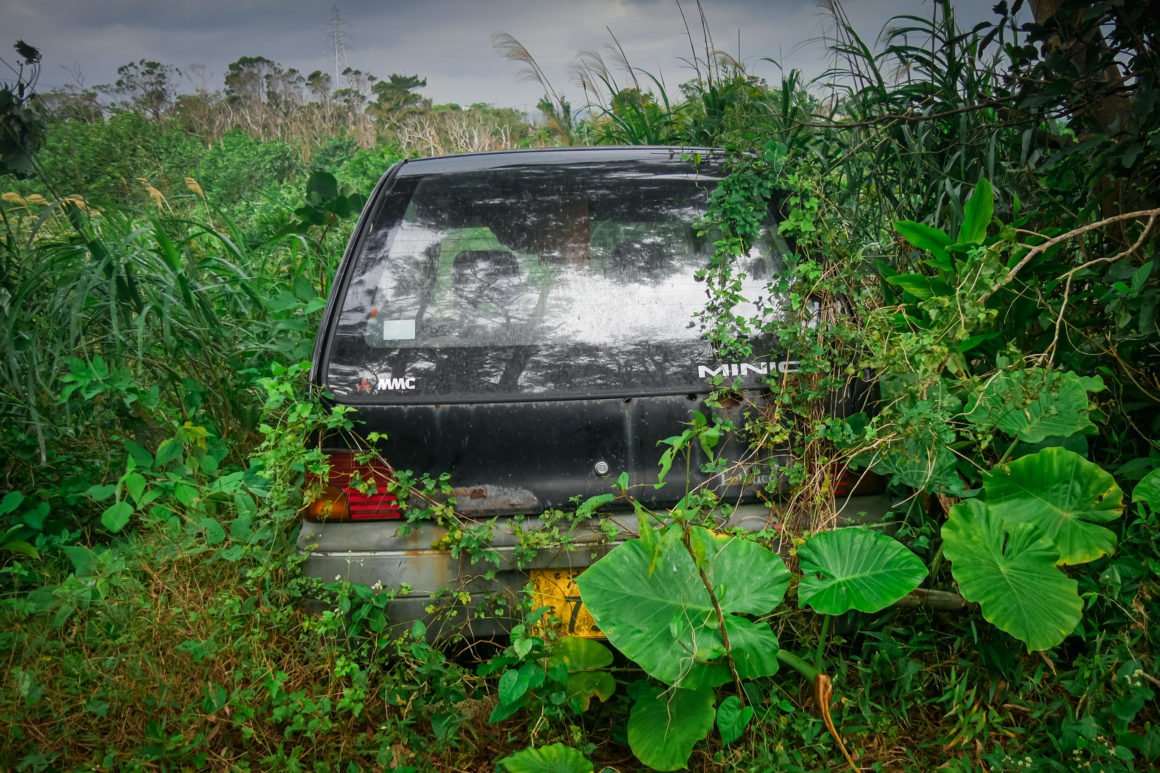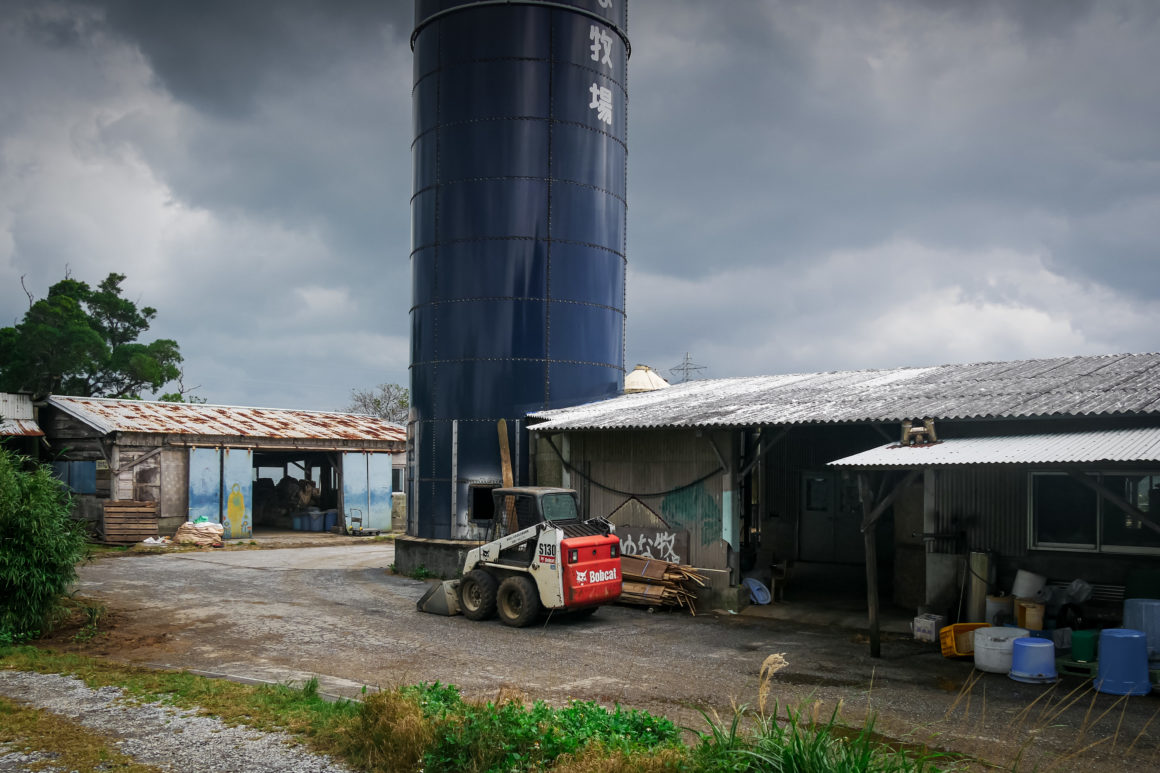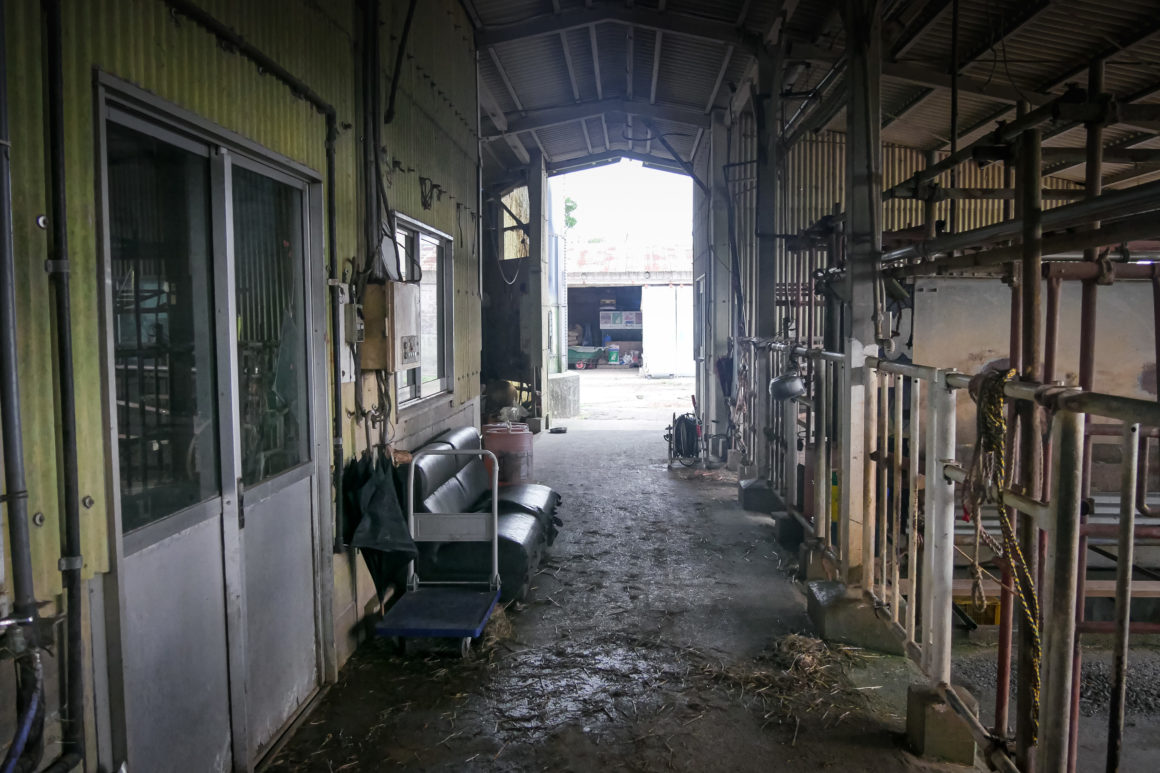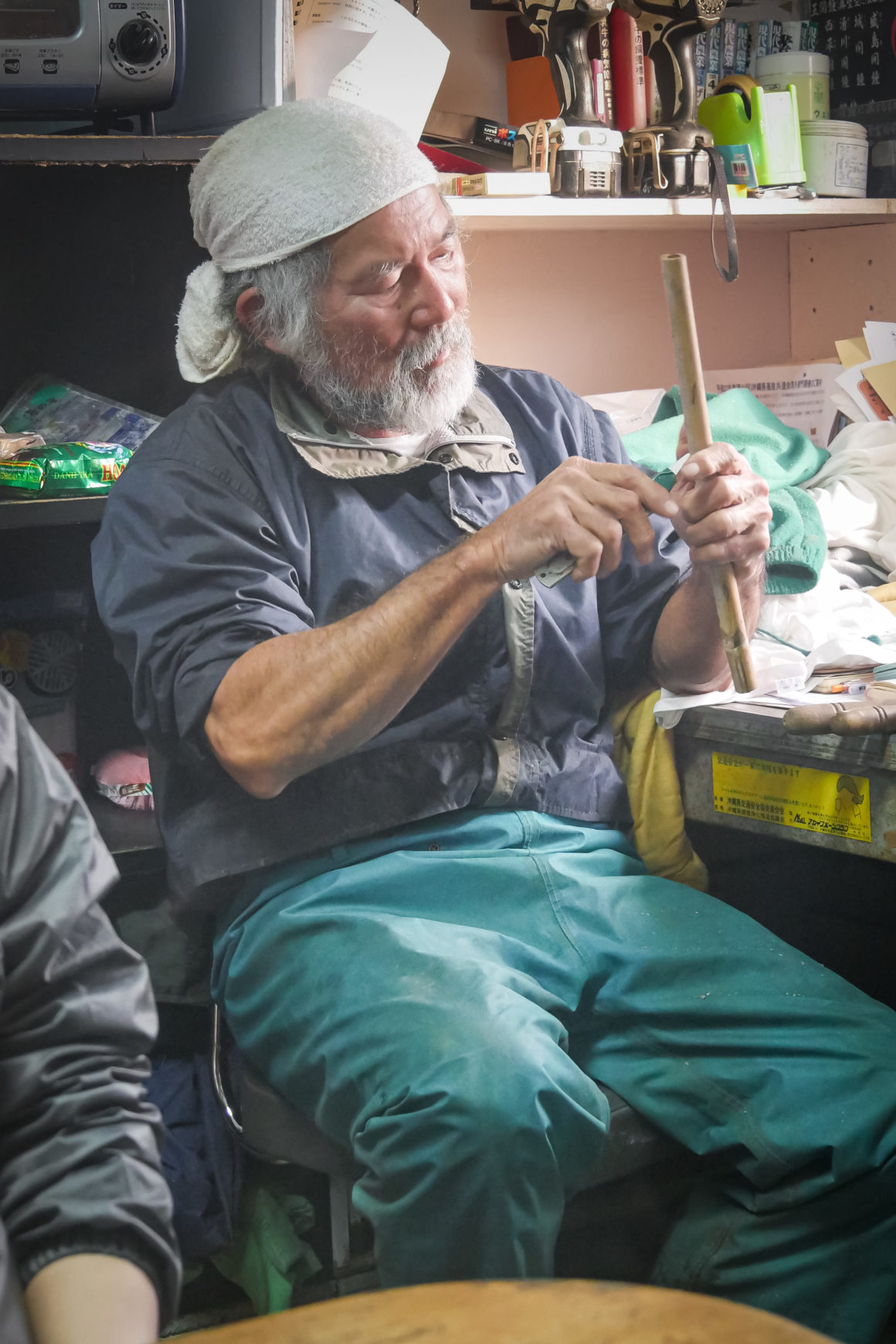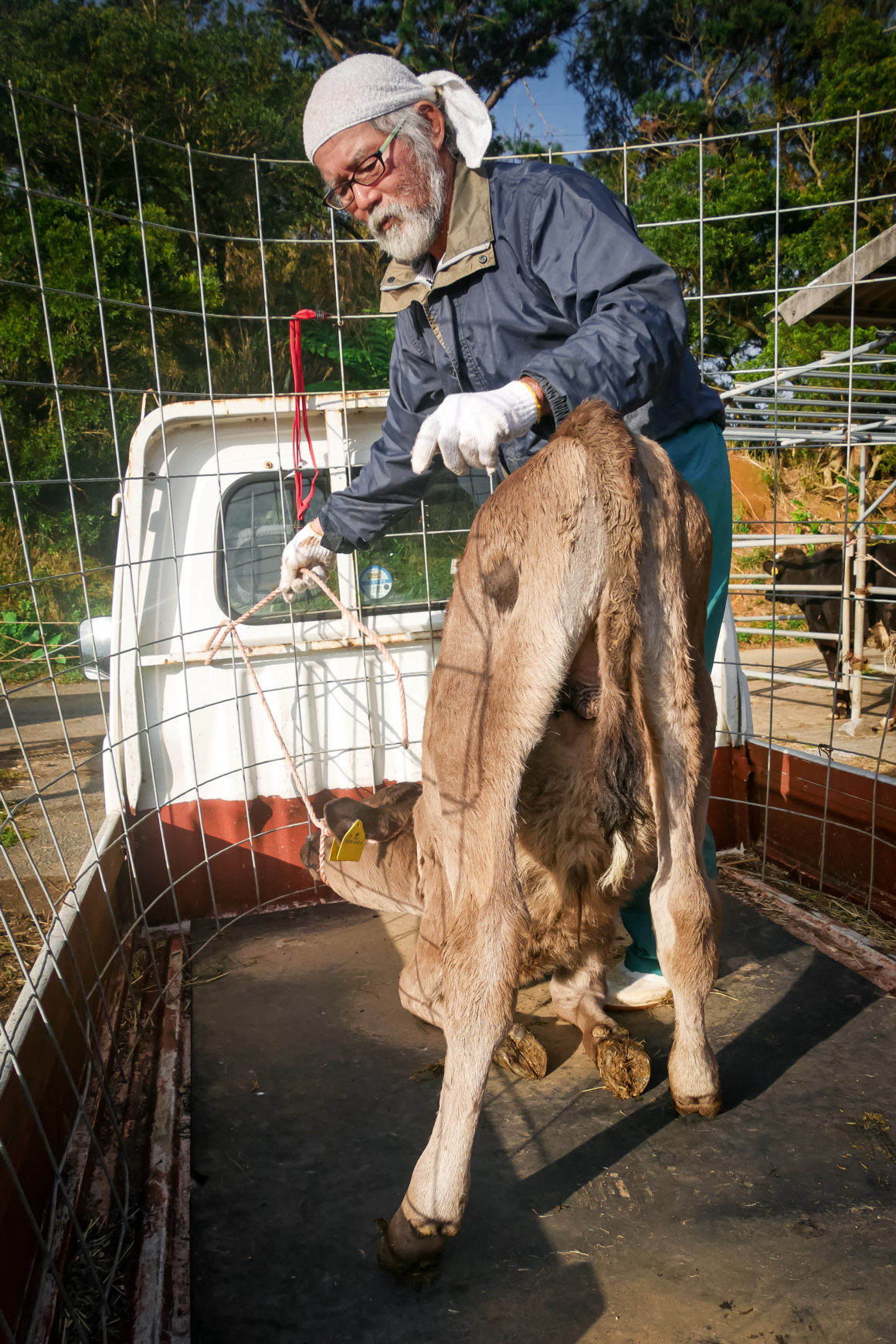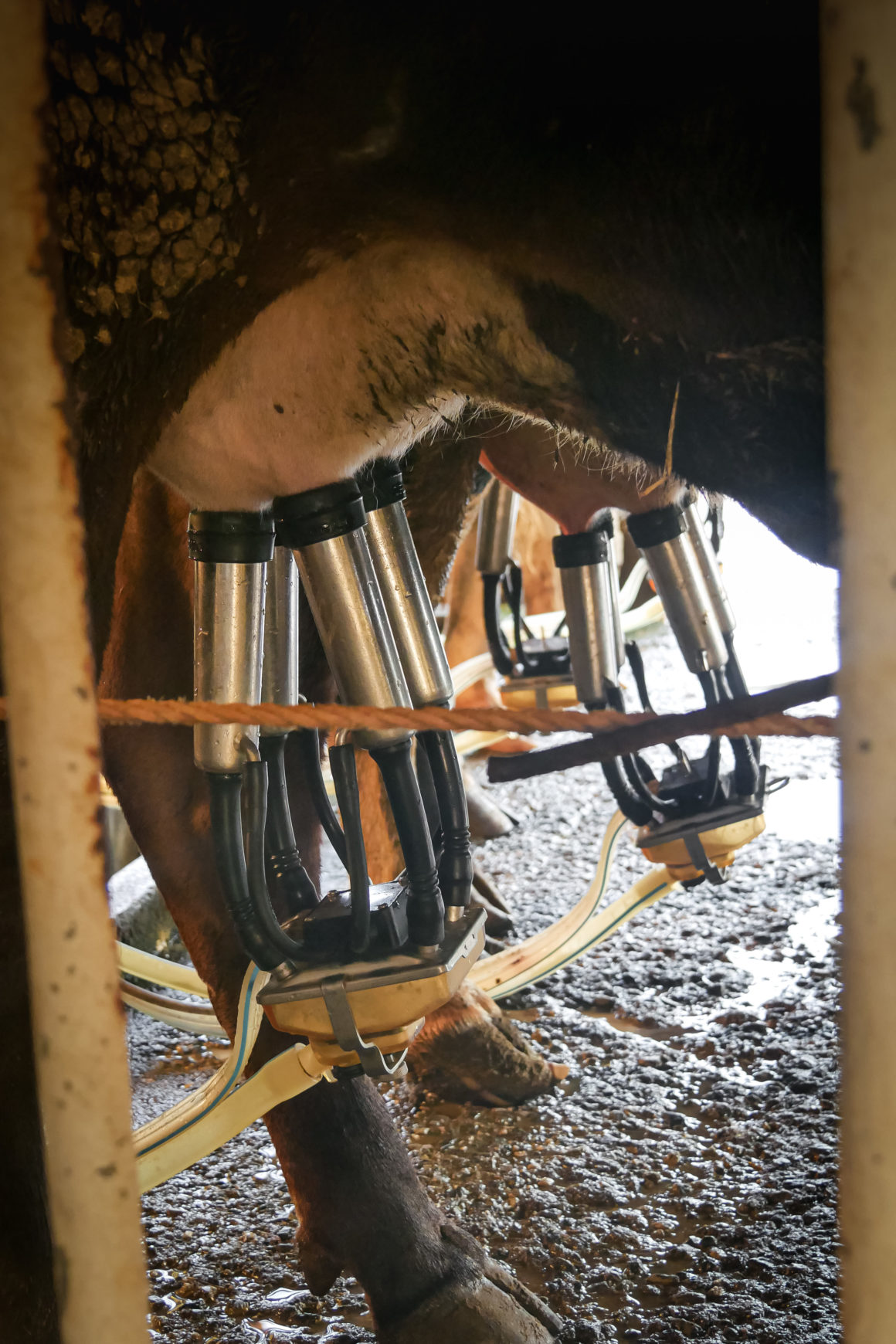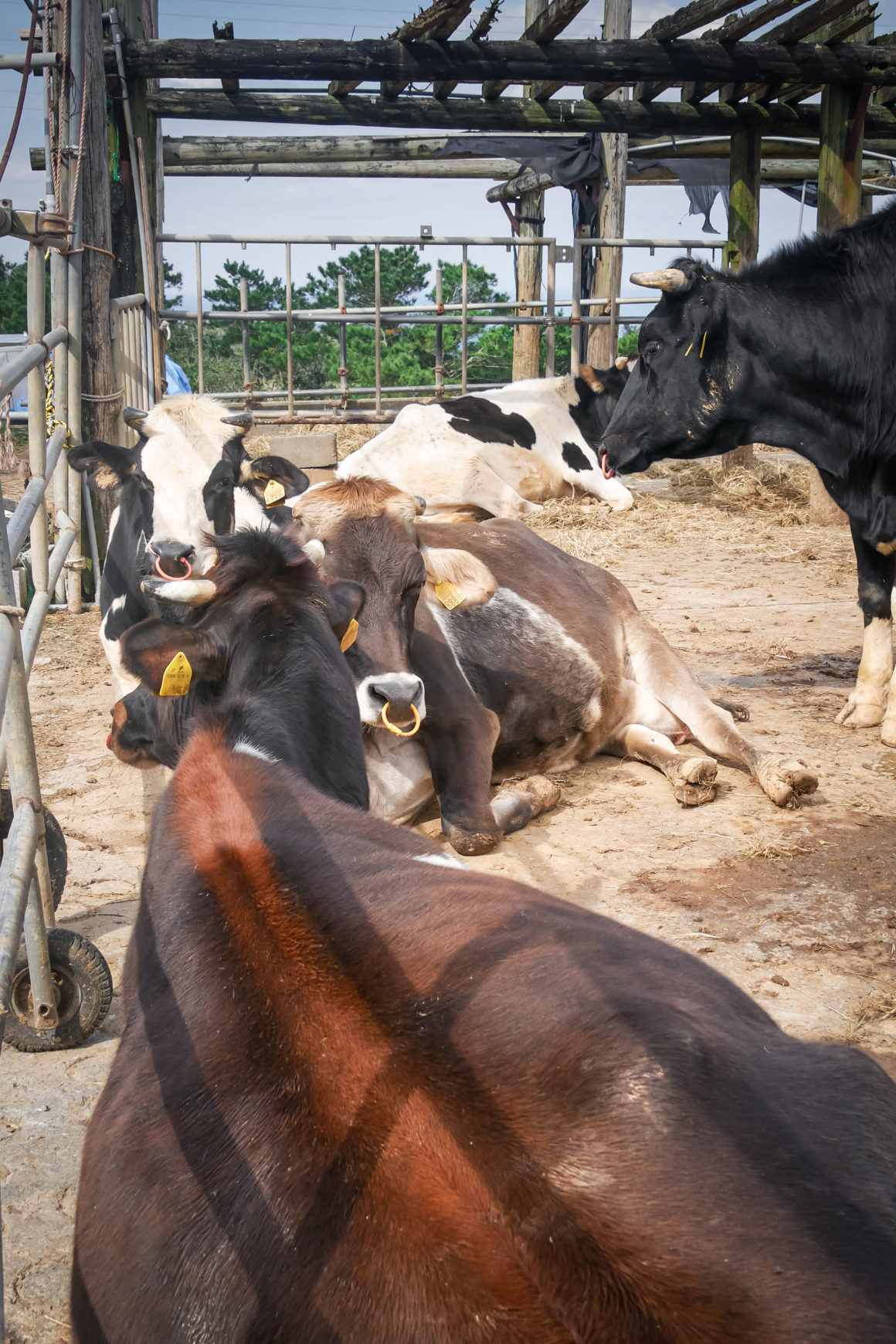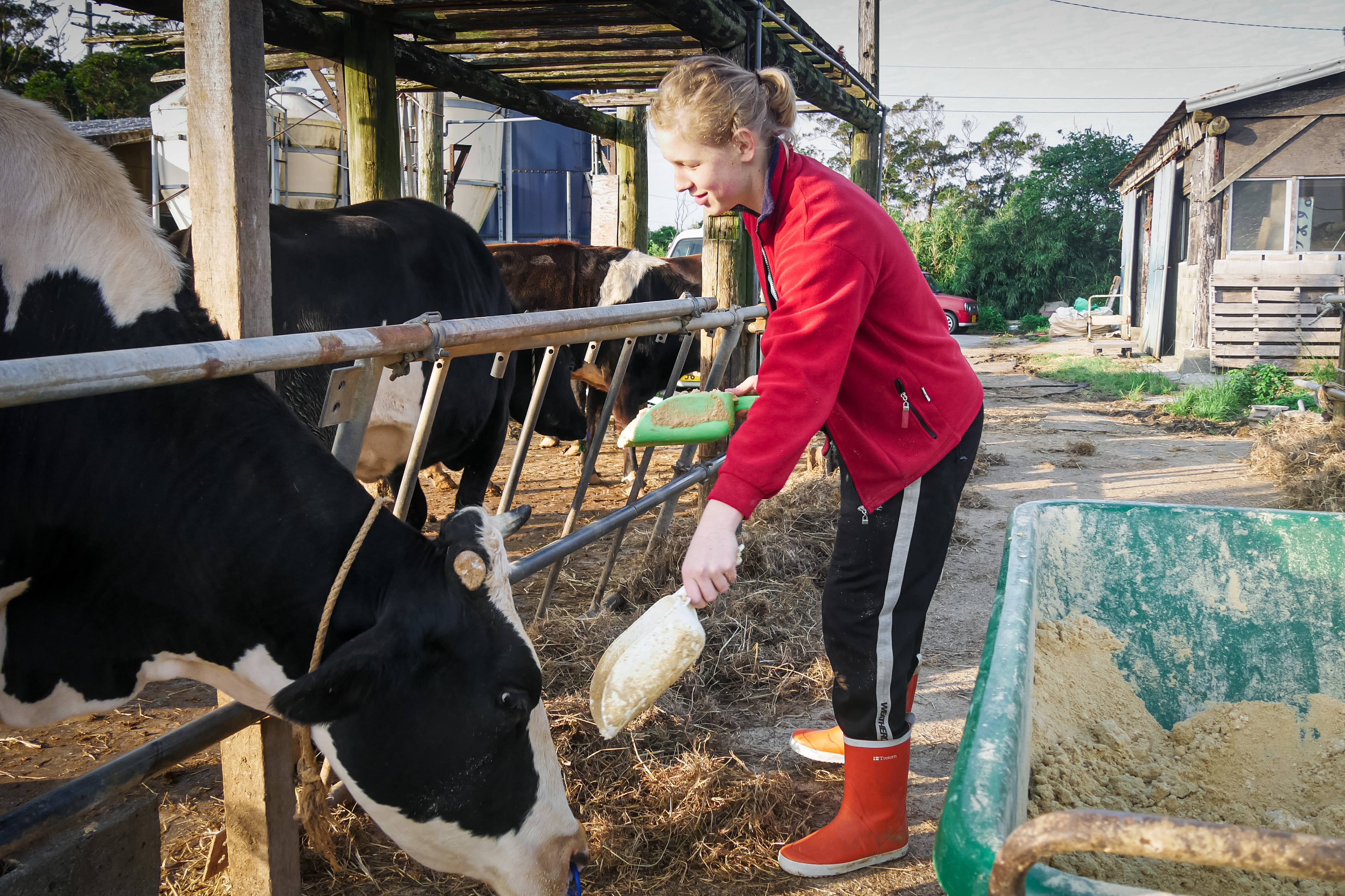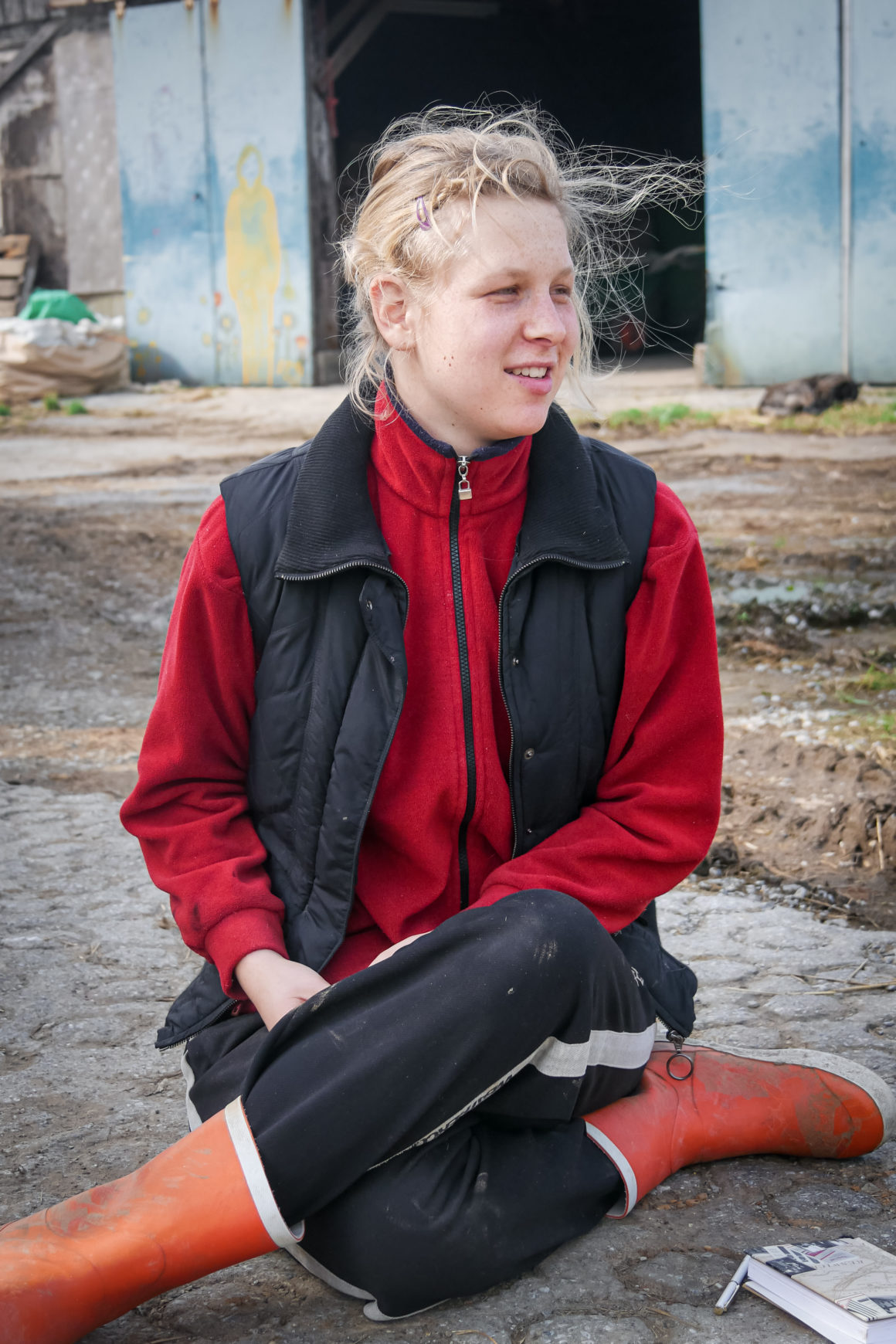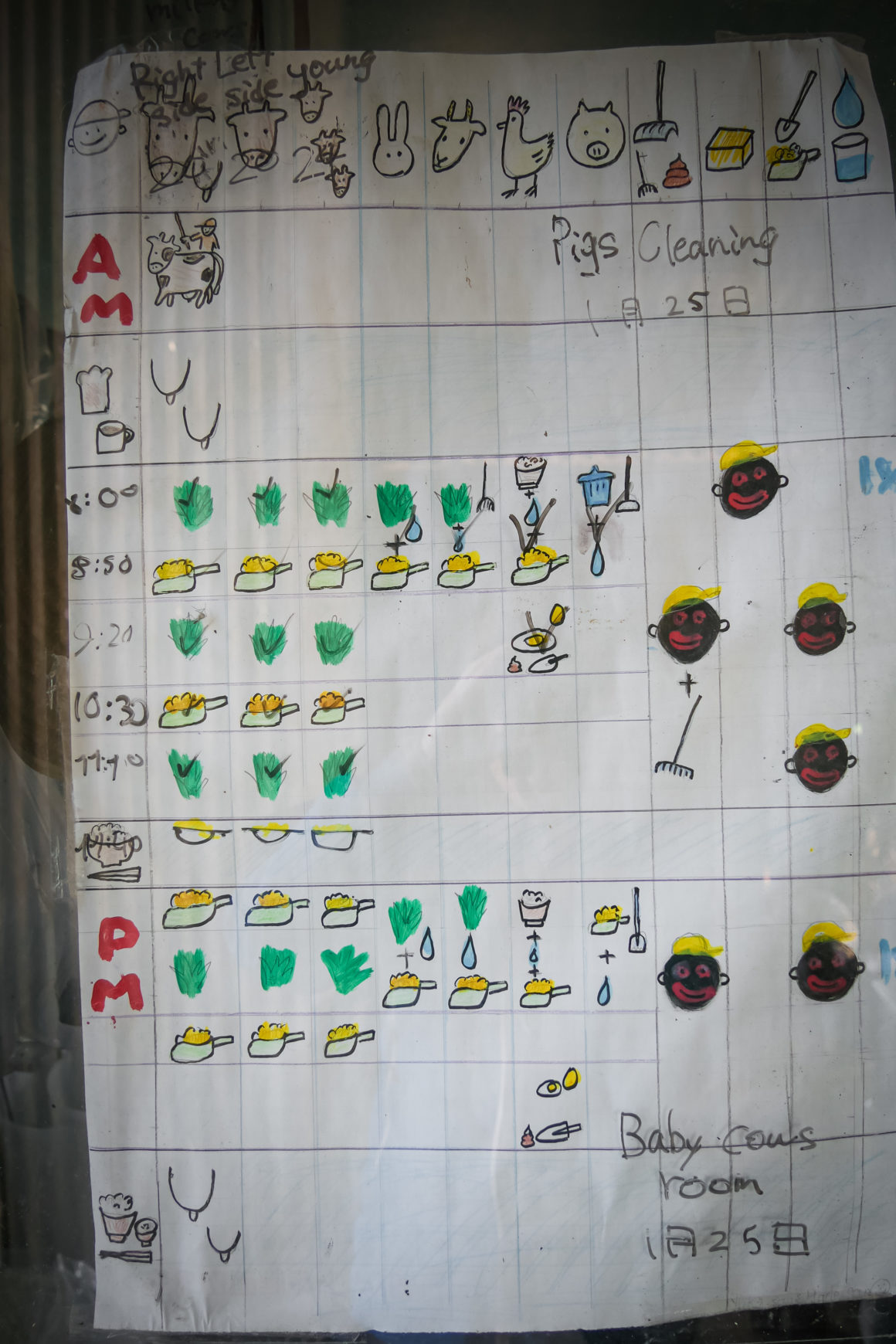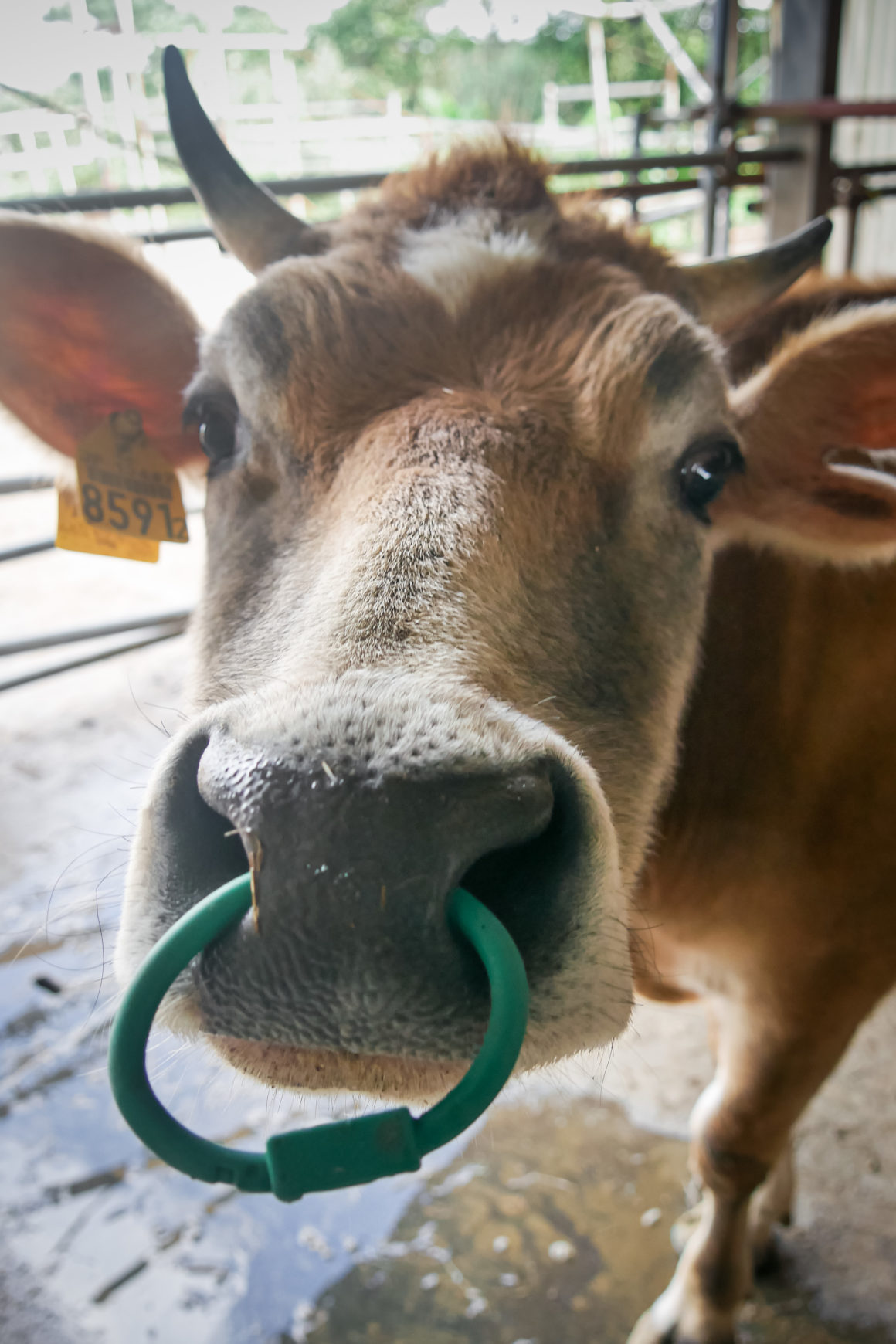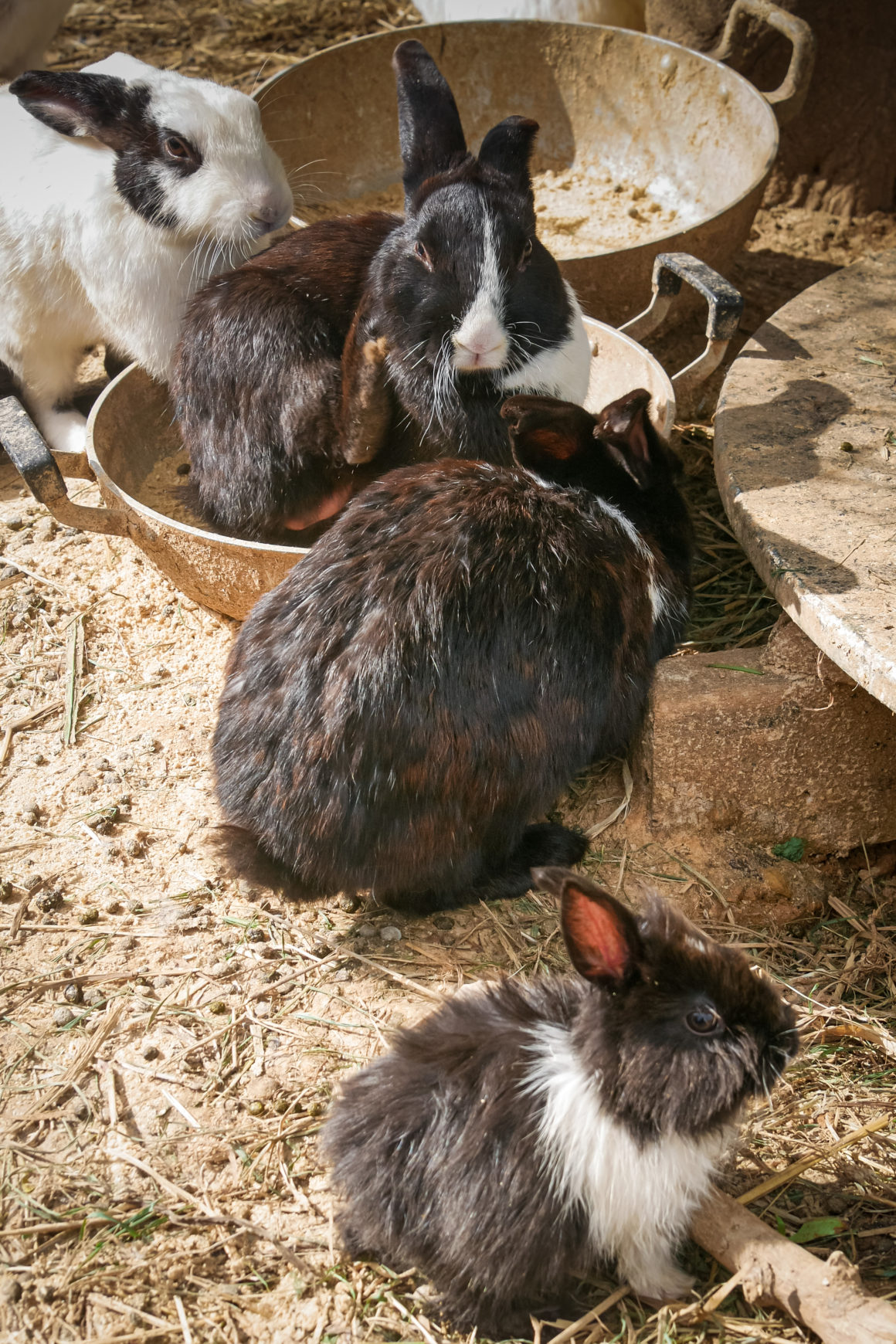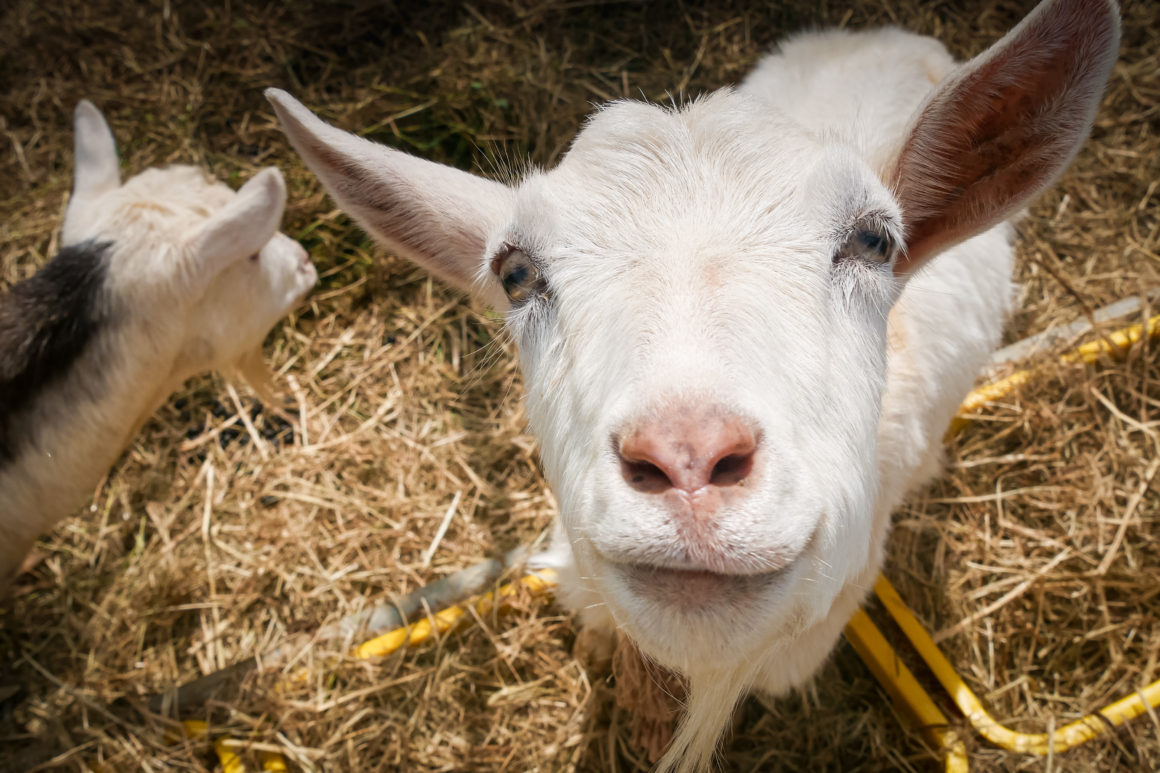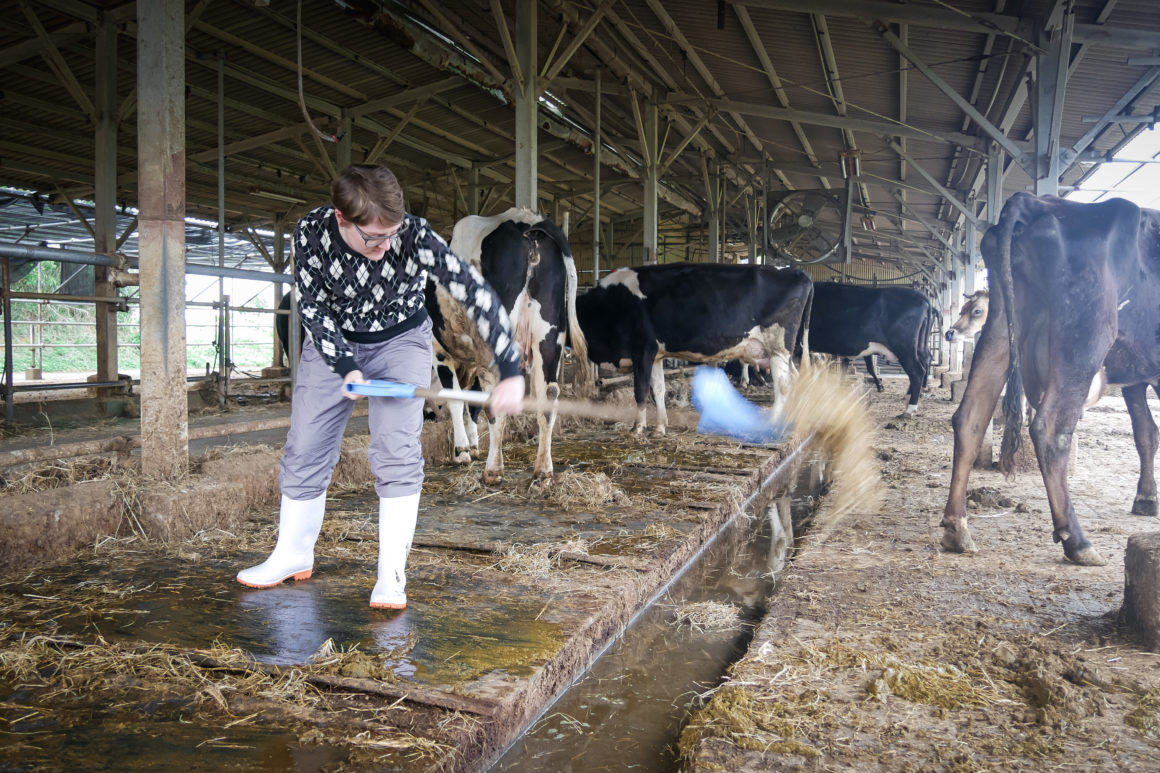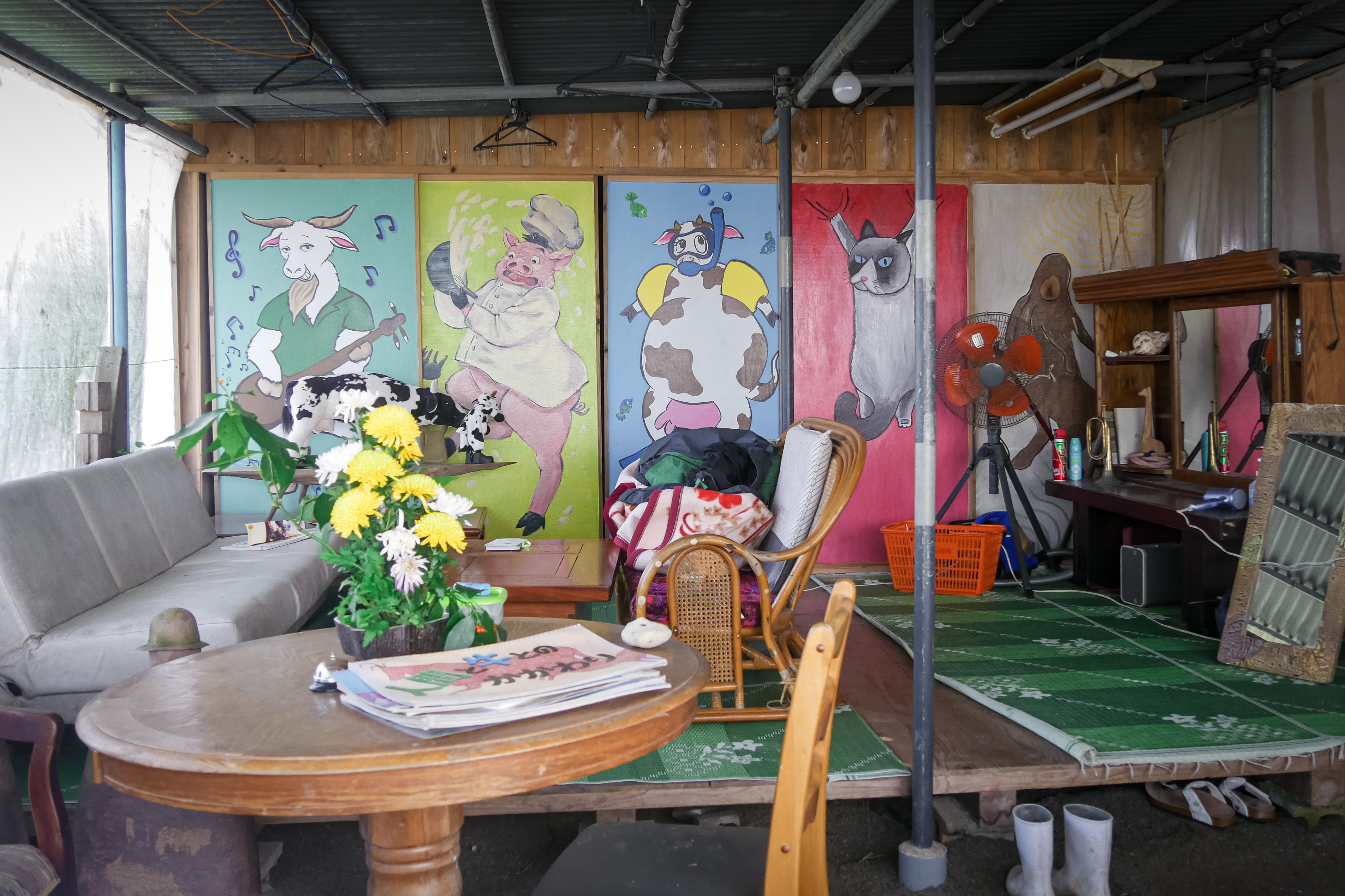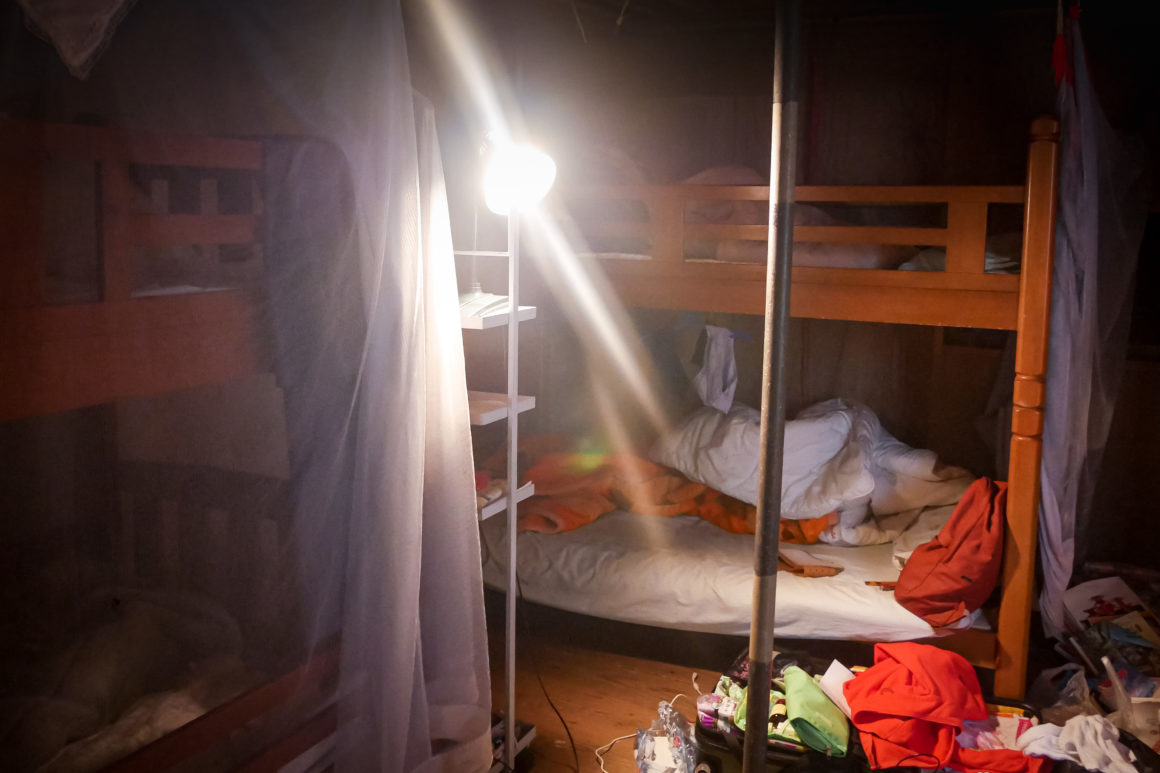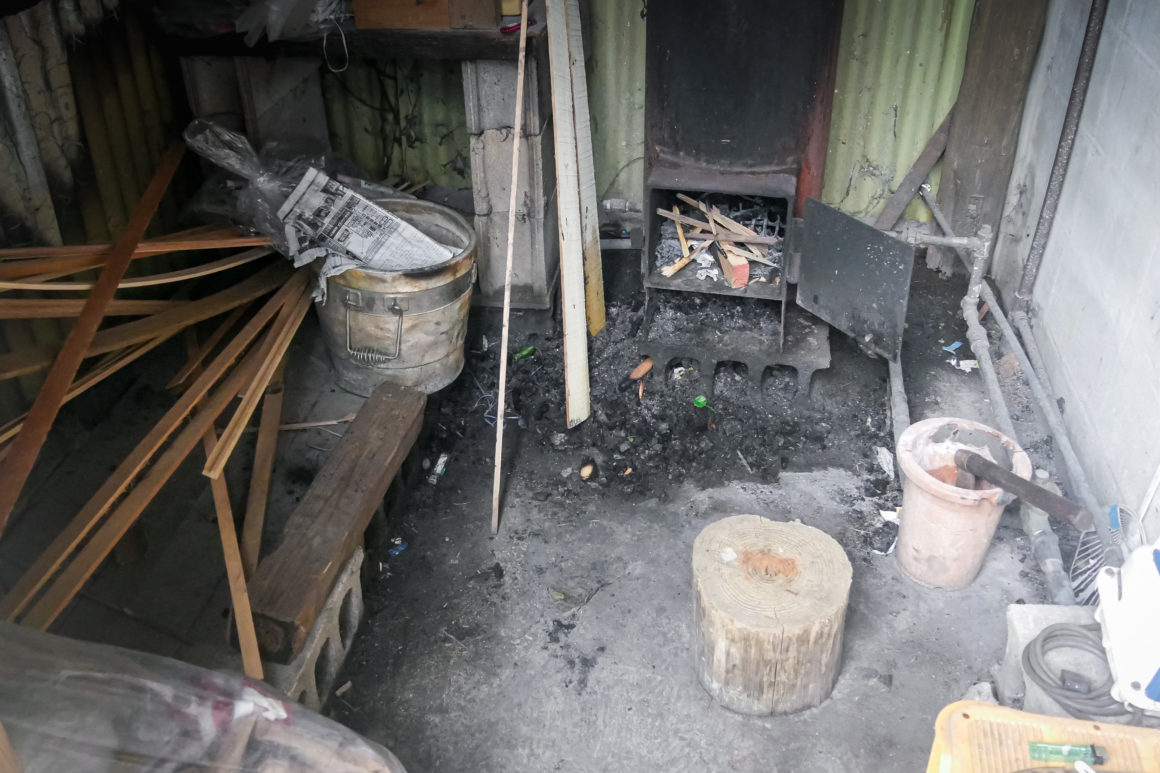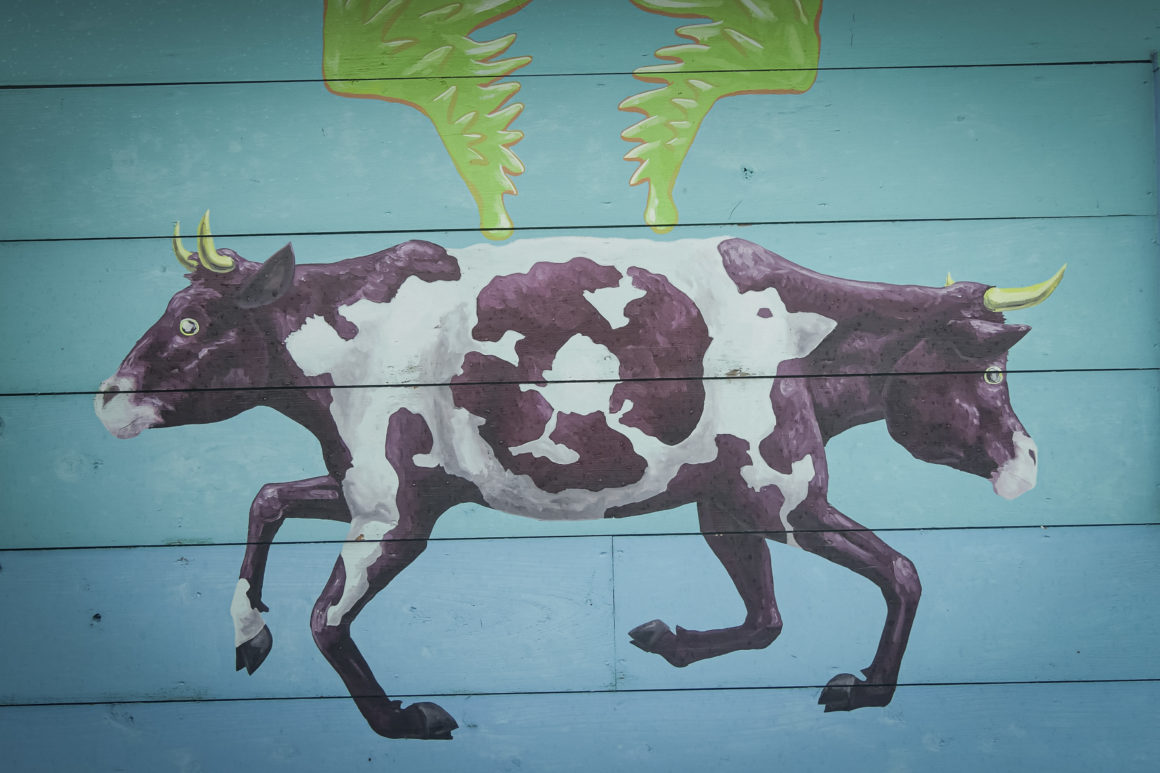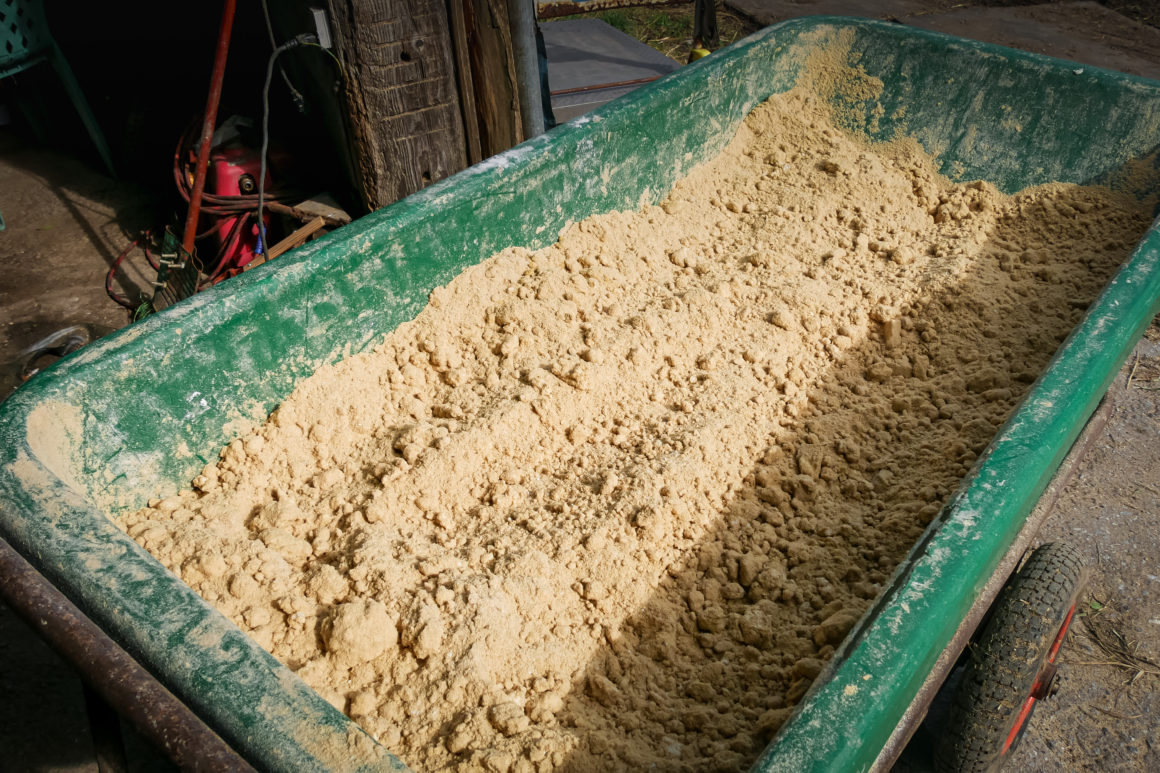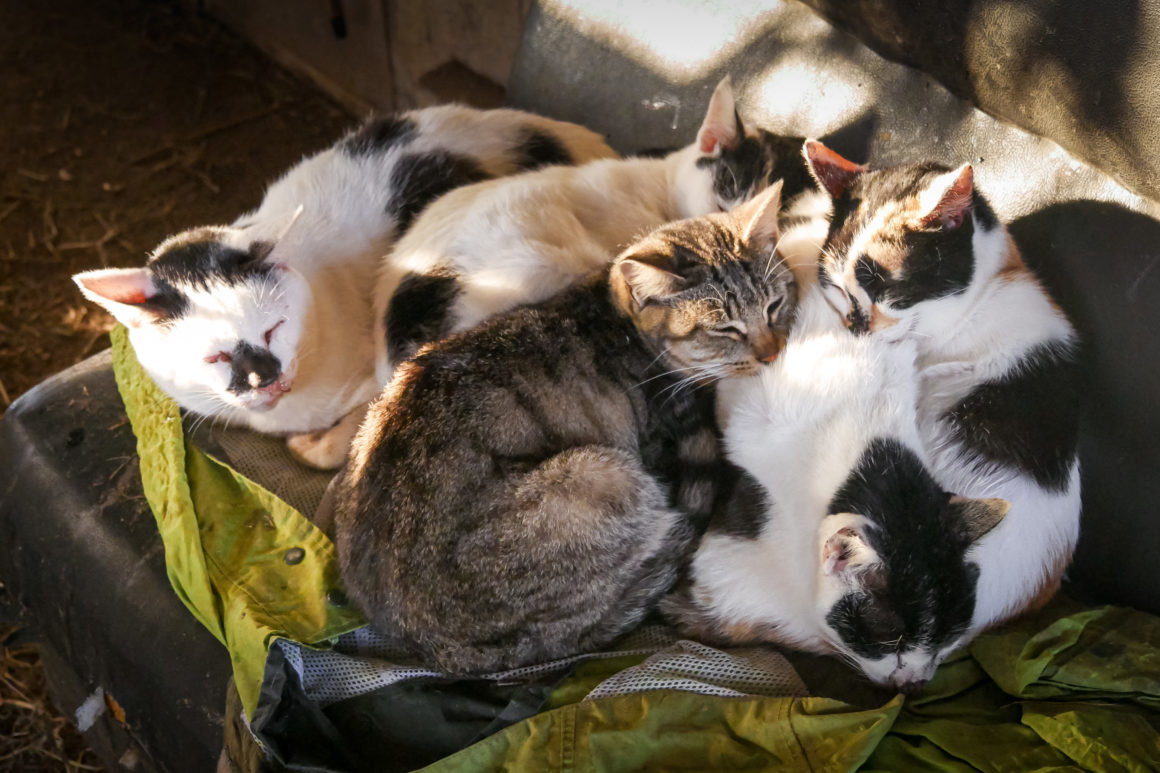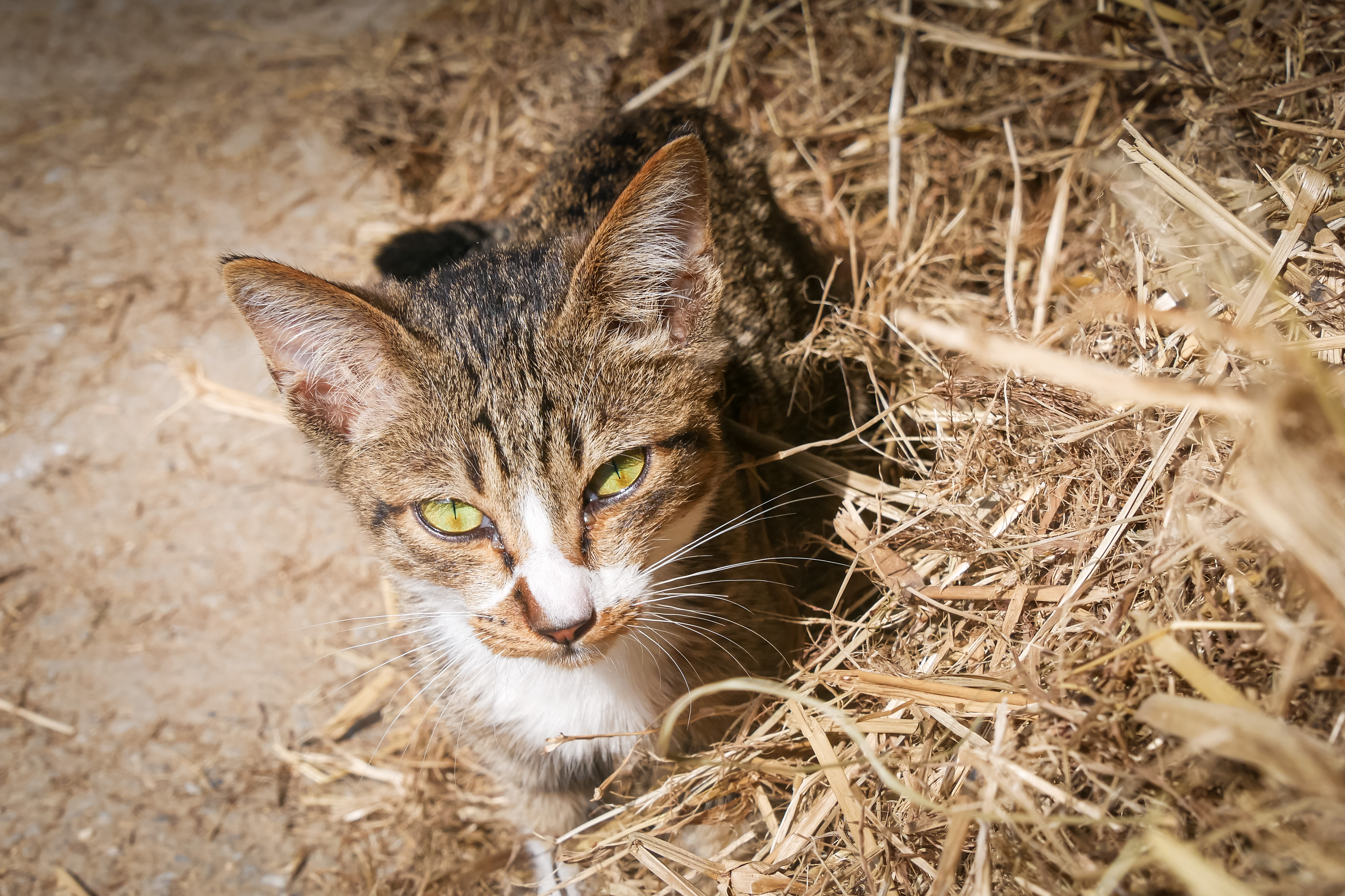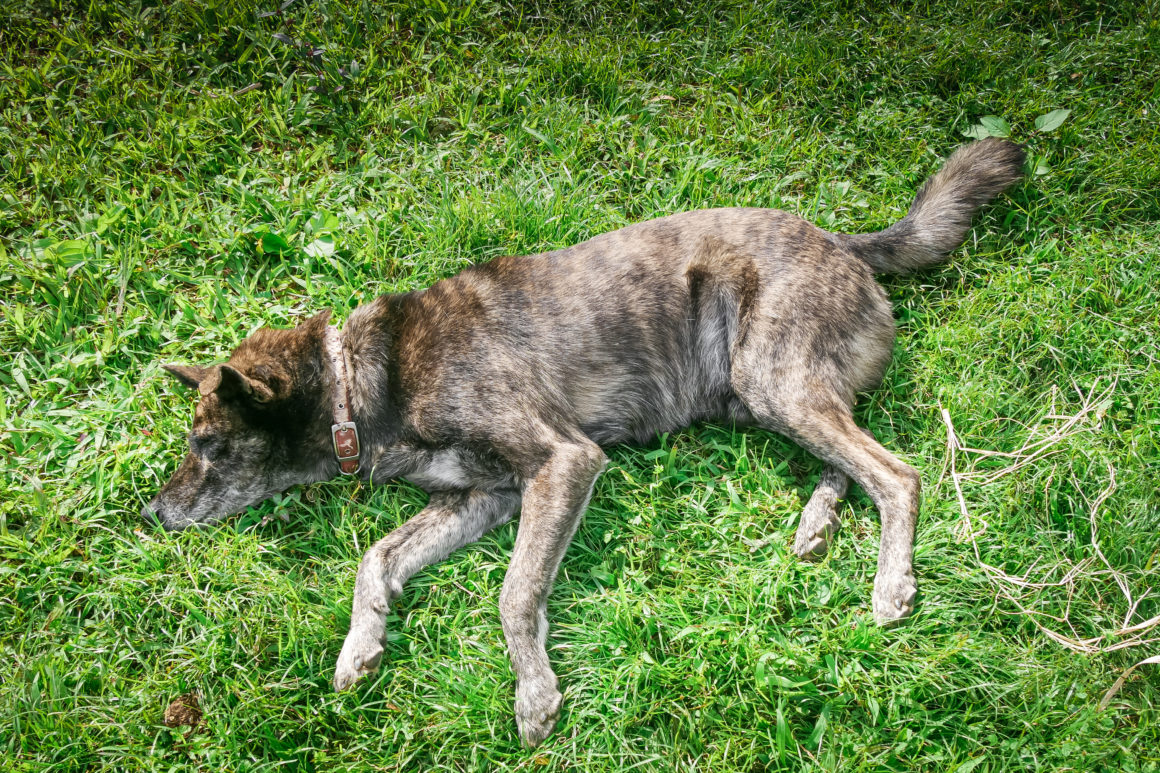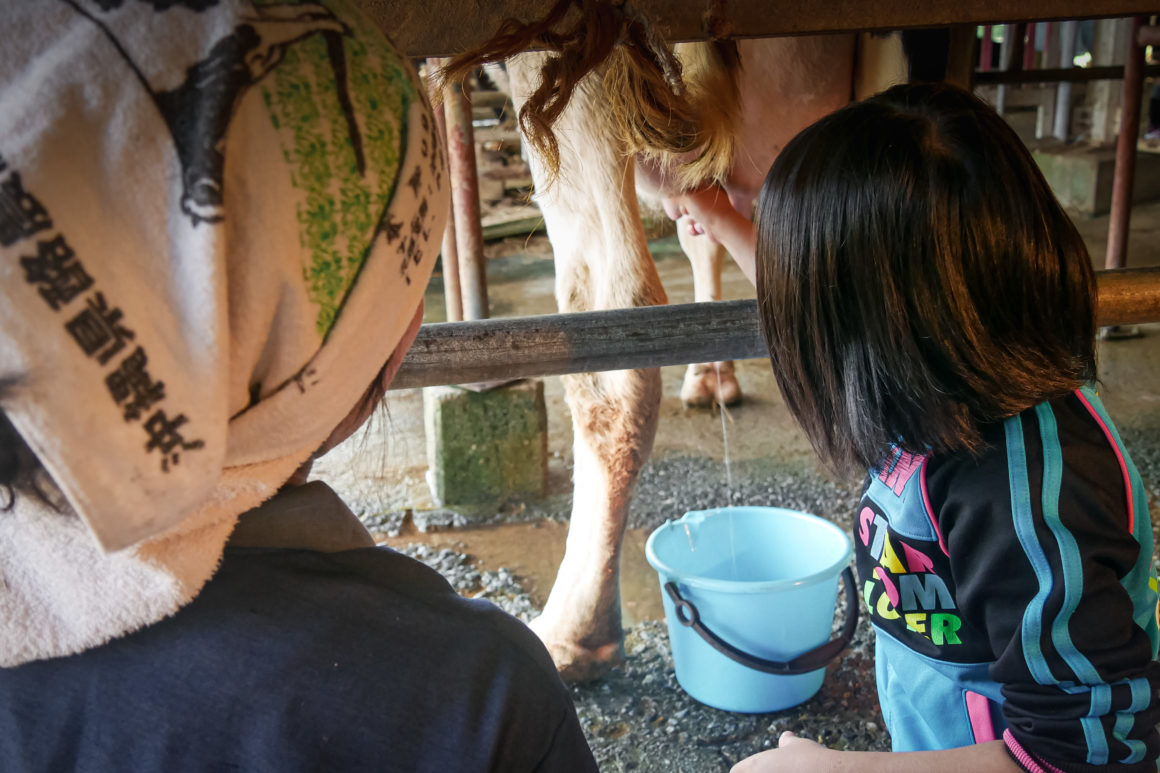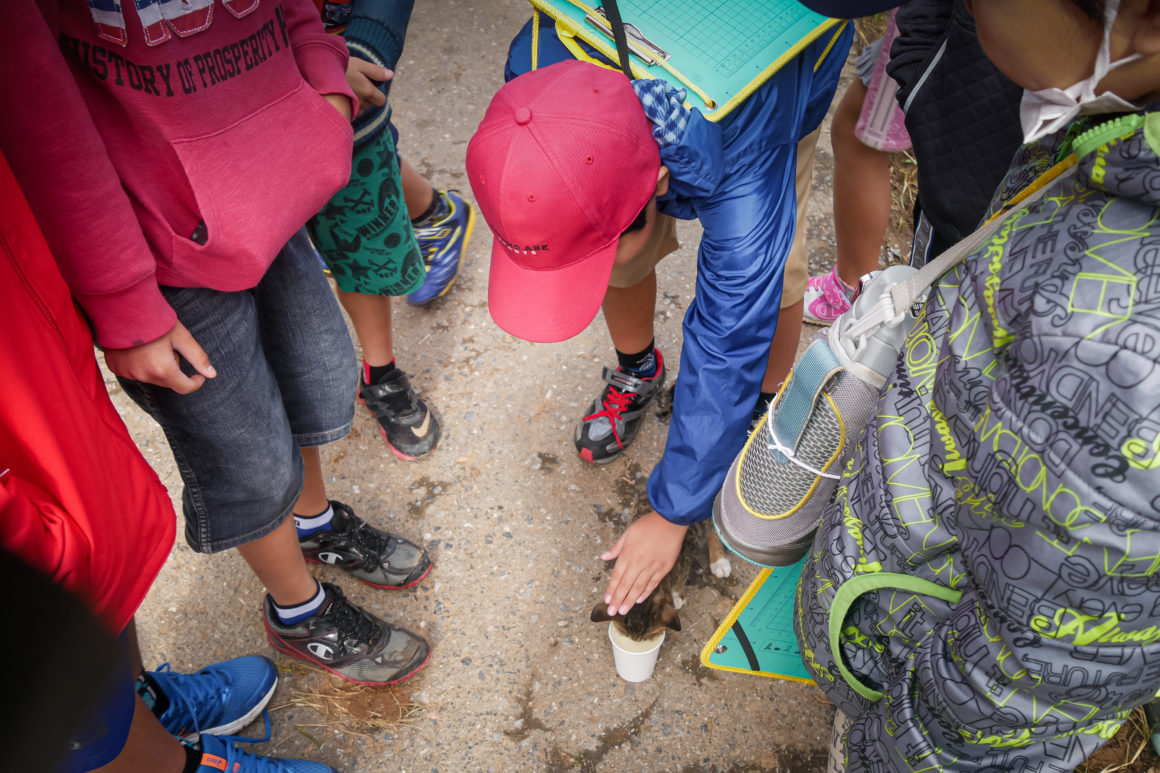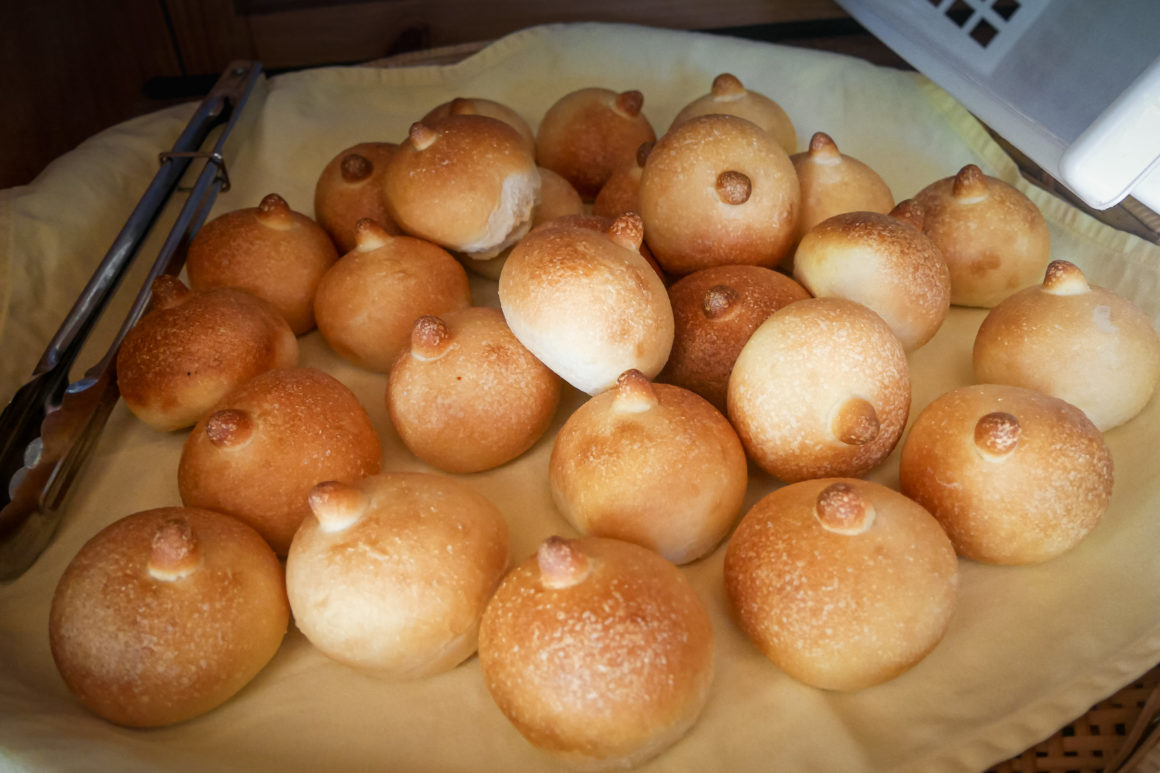DISPATCH
Monday January 18, departure at 8 am from Nago for Ôgimi, a small rural town in the north of Okinawa where my new woofing is located, on a dairy farm. I arrive half an hour later at the konbini (small convenience stores open 24/7 found everywhere) where the meeting place is located. I call the farm using a landline phone and wait almost an hour for my contact to pick me up. A little granny ends up landing. Keiko Kiyuna, the owner of the farm. She takes me in her small car, her foot heavy on the accelerator, on a small path winding through tropical wildlife amidst the hills. The farm is outside the village of Ôgimi. Sprawling on the seaside and the small hills covering the north of the island, the dwellings are rural and quite isolated from each other. On a plateau just outside the village are many small family farms, including the Kiyuna farm dedicated to a very small milk production.
Arriving at Kiyuna Farm, I get to know the other woofers and discover a very rural small farm. Keiko shows me the accommodation (very very rural, all of that) and invites me to choose work clothes and boots warning me that work is messy. She then abandons me to the other woofers who are responsible for showing me the work. I get to know Saya, a young Japanese girl studying agricultural work and milking cows, on woofing for two months on the farm and three German: Sonja, Martin and another one of whom I regret to say that I do not remember his first name. The two young German men are friends who have been on the farm for a month. They are leaving tomorrow. Sonja arrived three days ago. Sonja warns me that the work is hard and exhausting and that there is little free time. When I am told that the alarm clock is at 5:45 am to gather the cows at 6:00 am, I am a little overwhelmed. It is really early! Without further ado, head for work. I am introduced to how to feed cows, clean manure, prepare food, etc. I also meet Asahide Kiyuna, Keiko’s husband, little grandpa with a big smile.
At noon it is dinner in the house with everyone and then we leave, the three Germans and I, to take a trip to the beach. The sea is rough but that does not prevent them from taking the plunge. Back at the farm, we resume work to finish around 6 p.m. I am very tired after this first day and a little disillusioned with what I had imagined. The atmosphere said to be very family and friendly highlighted in the comments recommending this woofing is not really present. Maybe because it is winter. The workload is also much higher than expected.
The following days are alike, tiring, monotonous and not really funny. Keiko and Asahide participate very little in the work of the farm. Probably because they are getting old. And apart from during meals, exchanges are very limited. Fortunately I get on well with Sonja, the kittens on the farm are such cuties and working outdoors all day is nice.
The farm is owned by Asahide and Keiko. Asahide is a joker, kind, smiling grandpa who lived two years in the United States in his youth. With Parkinson’s disease, Otôsan (emotional nickname meaning “Dad”) has some difficulty speaking when he is tired. Passionate about music, he spends a good part of his time singing, sculpting small flutes from bamboo or playing shamisen (a kind of traditional three-string guitar from Okinawa) inside the old silo, now empty and allowing a nice resonance. The interior has been fitted out with a lamp, a small table and a chair. Shamisen, flutes and sheet music rest inside. When the mood takes him, Ôtosan embarks on the interpretation of great classics, including singing. It is also possible to climb the silo from outside. The 30-meter climb (I think) is painful for the hands but the view at the top of the surroundings is worth it. Asahide’s main job is to evacuate the manure and milk the cows.
Keiko Kiyuna is also smiling like her husband but much more authoritarian. She is the one who prepares the meals for the woofers and takes care of feeding the calves. She also maintains a small vegetable patch and a small garden containing medicinal and aromatic plants. During the stay she showed us how to make butter the traditional way: mix a little milk and cream, shake everything for five minutes and add a few pinches of salt.
The Kiyuna farm has about twenty dairy cows, twenty-four heifers and six calves. Each cow has its character: the group leader, the energetic, the curious, the cheeky, the brute, the calm, the fearful, the distraught, the “push yourself that I pass”… In addition to the cows, Kiyuna Farm has about fifteen goats, ten rabbits, a good thirty roosters and hens and a couple of black pigs looking more like wild boars than pigs.
Naturally calm in normal times, the cows turn into real brutes when the food arrives. The weakest cows are then hunted with horns. There are many cows with scarring marks and I have seen a cow bleed several times from a severe blow. I have also observed this kind of behavior in goats and rabbits but less violent. Honey Bunny is the weakest cow in the whole group. Being constantly brutalized by other cows and therefore unable to eat, she was separated from the group to be “housed” in a small space by herself. Naturally calm, Honey Bunny is the only cow to have been given a name that in fact refers to her pretty honey-colored dress.
Four male calves were sold during my woofing, most certainly to end up on our plates. Getting them out of their enclosure was a bit of a fight each time. But a single calf is powerless against two determined men.
Work at Kiyuna Farm begins at 6 a.m. to collect the cows that have spent the night in the meadow outdoors. While they are milking, we take care of cleaning the barn and removing the manure from the stalls. Around 7:30 a.m. we feed them with hay, then half an hour later with esa (Japanese term for a food supplement). Breakfast at 8 a.m. Until noon, the cows are fed every half hour alternating hay and esa. Goats, rabbits, roosters, hens and pigs are also fed and the cages cleaned. Lunch at noon then free time until 3am. Work then resumes until 5 a.m. – 6 a.m. to clean the stables again, evacuate the droppings and feed all the animals.
Milking cows
Esa is a feed supplement for cows made from a mixture of cereals, tofu, another excruciatingly odor-inducing substance, rice and vitamins. Cows generally eat two large wheelbarrows of esa a day. So we had to prepare and mix the mixture by hand two to three times a day.
Working on the farm is not fun. Cleaning the stables, preparing the hay, mixing the esa, cleaning the calves, etc. are long, difficult and painful tasks for the body, especially in the first days. Whether it is a beautiful sun or a storm, the job has to be done. The lack of diversity also makes the work a bit monotonous. Fatigue is all the more important since there are few free times and they are short. I admit that the big workload surprised me a little when I arrived and that the work did not particularly enchant me. However, I enjoyed working all day outdoors with animals and seeing the sunrise every morning.
Kiyuna Farm mainly works only with woofers. The only other permanent employees are a man and a woman who come to milk cows in the morning and in the evening in turn with Asahide. The farm’s walls are covered with woofer drawings from around the world. During my stay, I worked with two Japanese, one English, one German and when I left, an Austrian arrived. Sonja pictured on photos above is a 23 year old German girl who came to Japan for a month and a half. A month of woofing followed by two weeks of exploring the country with one of her friends coming to join her. Young, calm and very friendly girl, we discussed a lot of our similar questions about our future, our job and our travel desires.
The accommodation for the woofers is a small hut made of odds and ends, wood, sheets and plastic sheeting just in front of the calf, rooster and hen enclosure. Wake up at 5am with a guaranteed cocorico! The accommodation consists of a common room and a dormitory bedroom. The equipment is minimal and there is no thermal insulation. During the storm that lasted for five days of my woofing, the tarpaulins were clapping so loudly that we hardly heard each other talking. I thought our accommodation was gonna be destroyed under the power of gusts. The toilet and shower are outside with very rural sanitary conditions. You have to make a fire to get hot water. Despite everything, the whole has a certain charm, notably thanks to the successful paintings that line the walls of the dormitory and the farm.
The surroundings of the farm are filled with a kind of jungle made of a mixture of deciduous trees and tropical trees. The atmosphere is hot and humid. The farm is home to a dozen cats and three small kittens, most of them stray, who decided to settle in the stables after realizing that it was easy to get food. When I got there, most of them had caught cold due to bad weather and it was a little painful to see them sniff or sneeze, with watery eyes. The common cold is a disease which can be very dangerous for cats. Sonja and I built small shelters for them to protect them from the cold and the rain. The three little kittens (I have no idea how old they were but they must not have been old) were absolutely irresistible. In search of love and caresses, they came all the time meowing and rubbing their legs to be taken in the arms. Immediate purring! I shared some very beautiful moments of tenderness with each of the three, especially in the evening when I brought them with me in the small barrack where the internet connection was, to protect them from the cold. In a lump on my legs falling asleep or following one of the episodes that I watched with attention, calling for nose-puffing caresses, purring, small, thin, hot body. I was not a huge fan of cats before that, but now my heart may have changed side.
The return of the sun after five days of storm was experienced by everyone as a deliverance. All the animals were basking in the sun to store the heat. Ni, the farm dog (“Ni” means “two” in Japanese), particularly liked to spread out in the green grass on one side of our accommodation.
Towards the end of my stay, a group of schoolchildren came to visit the farm. Kiyuna Farm regularly hosts visits to surrounding schools. Children learn about work and life on the farm, learn how to make butter, test milking cows and play with kittens. Lots of excitement and shouting during these visits but smiles and enthusiasm are nice to see. For the children’s visit, Keiko Kiyuna had prepared rolls in the shape of cow udders. But most of the children found that they looked more like “oppai” (“breasts” in Japanese). Suddenly they were renamed “oppai-pan” (“pan” meaning “bread”). The kids laughed a lot. Joking aside, the breads were very good.
In the end, my ten days of woofing pass relatively quickly but I admit that when I left Kiyuna Farm on the morning of January 28, it was without regrets. After these few tiresome days I will take advantage of the last days I have left on Okinawa to rest and go to visit the Churaumi Aquarium of Okinawa, the second largest aquarium in the world, after that of Atlanta in the United States.

